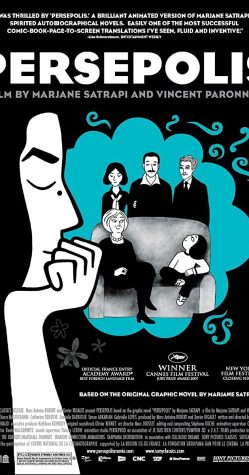Reed Books: Persepolis
December 20, 2020
Persepolis by Marjane Satrapi is a graphic autobiography that details Satrapi’s life as a young woman during the Iranian Revolution in the 1980s. Only ten years old at the start of the story, we see Marji, as she is called by friends and family, learn and unlearn the world around her as the political climate drastically changes. She uses a simple artistic style but maintains complex writing to create a mix of educational and juvenile tones. While information-heavy at times, the book successfully conveys Satrapi’s life without being self-indulgent or overly formal.

The art style Satrapi uses is one indicative of her own age at the start of the book. All of the artwork is in black and white, mostly using simple backgrounds and character designs. This way, Satrapi can easily prioritize certain characters or scenes simply by making the artwork slightly more complex. Fortunately, she uses this advantage at just the right points; when describing a family vacation to Spain and Italy as war is brewing in Iran, she depicts herself and her parents on a floating carpet, surrounded by European architecture and statues. The swirling line work around her family conveys the surrealism and disconnect that the Satrapis desperately wanted to feel at the time. Totally separated from any connection to Iran or their home life, they are literally flying away from their problems. This panel is a full-page spread, and contrasts with the many tiny and simple panels that make up the next few pages, when Marji and her family come home to discover that Iran is at war.
Overall, Satrapi’s command of both artwork and text speaks to her talents as a storyteller. She is able to manipulate a very simple artistic style to be effective in both conveying the plot and emotionally affecting the audience, making Persepolis a stand-out, not only because of its unconventional form, but because of its impact.

















































